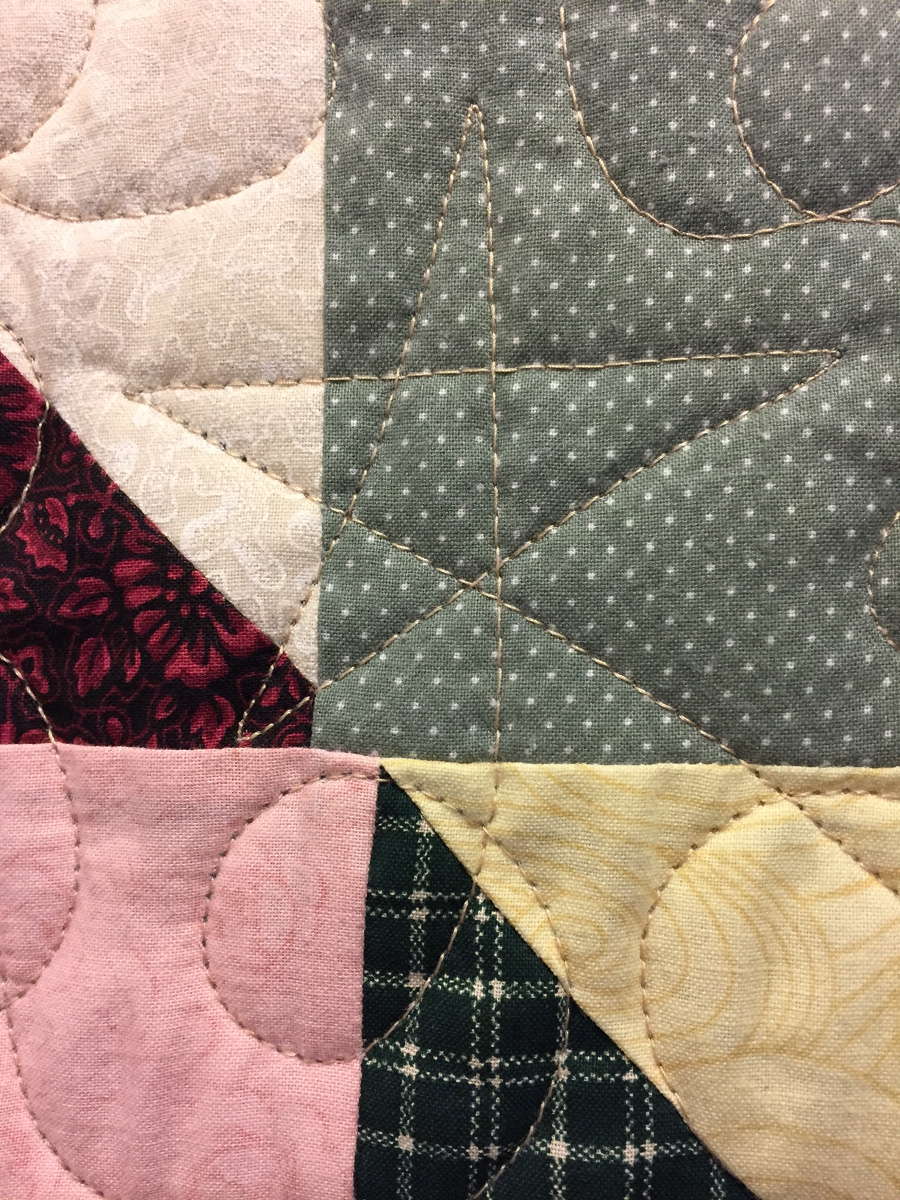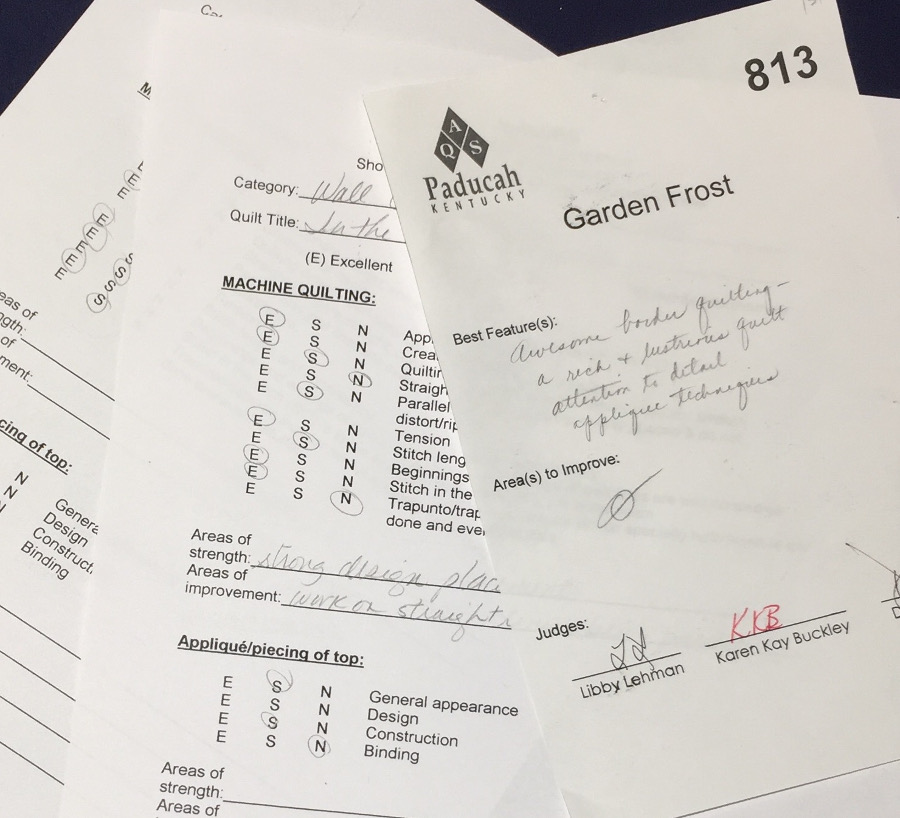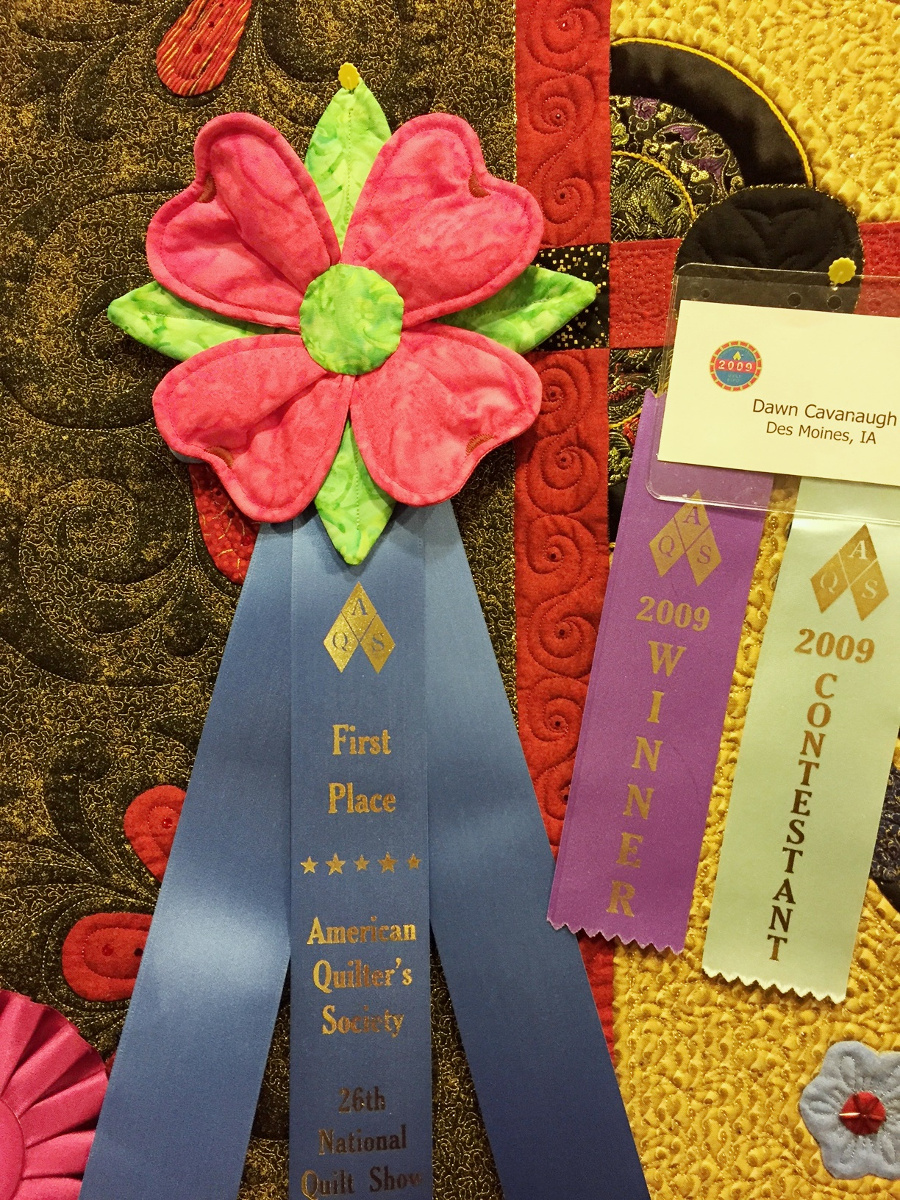Quilt shows – what do judges expect? [Part 1]
Editor’s note – this is the first article in a new series we’re launching about quilt judge expectations and solutions to the most commonly cited areas for improvement.
We’ve all stared longingly at a beautiful quilt adorned with an award ribbon at one point and thought, “My quilts are not good enough to win anything!”
We quilters are our own worst critic. We know where every tiny flaw is, and we are convinced that anyone looking at the quilt will immediately see each mistake like it was a huge zit on the tip of our nose. The fact is – they rarely notice it at all! They marvel at its beauty and admire our talents. But what do we do? We can’t just accept their compliments; instead we insist on pointing out every single mistake we made anyway!

Mistakes are proof that you’re trying and are golden opportunities to learn how to be better. Entering a quilt show and receiving feedback from experienced judges is a fabulous way to discover not only what you can improve, but also what you are doing well. Since you already know where many of your mistakes are, you have nothing to lose and everything to gain by receiving their input.
Everyone’s a quilt newbie at some point with lots to learn. Even experienced quilters discover ways to make their quilts better with each project. Quilt judges understand entrants are at different places in their quilting journey. They look at many things when evaluating a quilt—color, design, piecing accuracy and construction, binding, quilting density, design choice and execution, tension, thread choice, starts and stops, appliqué skill and more.

However, judges don’t have the luxury of studying your quilt for hours on end. In most cases they only have a few minutes to evaluate each quilt. Their critiques cite areas of strength as well as areas for improvement that they can note in that short time span.
Unfortunately, the judges can’t really tell you how to fix a problem that they see—they only identify them. The judges then compare your quilt’s noted strengths and weaknesses against those of other quilts in your category to rank the quilts for ribbons and awards.

That’s where we can help! We’re starting a series of blog posts that will explore quilt judge expectations, but more importantly, we’ll offer solutions to the most commonly cited areas for improvement.
We’ll cover topics like piecing accuracy, choosing quilting designs, tension and thread choice and much more. Even if you never take the plunge and enter a quilt show, you’ll gain valuable skills to help you take your quilts to the next level!
Our first topic – making sure your judges see your quilt!
If your goal is to eventually enter a quilt show, follow these basic guidelines to ensure that your entry makes it to the judging arena in the first place:
Understand the competition rules.
- Follow category descriptions carefully, measuring your quilt accurately and ensuring that your quilt actually “fits” the category. If it doesn’t, show organizers may move it or even disqualify it.
- Make sure your quilt always has a hanging sleeve. Some venues require special sleeve placement and size to accommodate their hanging devices
Meet or beat all deadlines.
- Each show will have a different timeline. Pay attention to photo entry deadlines for juried shows, entry form deadlines, and quilt shipping deadlines. Allow extra time to account for shipping delays outside your control.
Safely ship your quilt.
- Protect it in transit by putting it in a clear plastic bag, using a sturdy shipping box, and labeling the package with your contact info both inside and out. Track its progress and consider asking for a signature upon receipt.
- Insure your quilt (an official appraisal is necessary for insurance claims). However, no insurance can cover the emotional loss if your quilt is lost or damaged. If you can’t bear the thought of losing the quilt, then it is best not to enter it.
- Verify that the venue has security measures in place to protect your quilt while in their possession and how the quilt will be safely returned to you.



